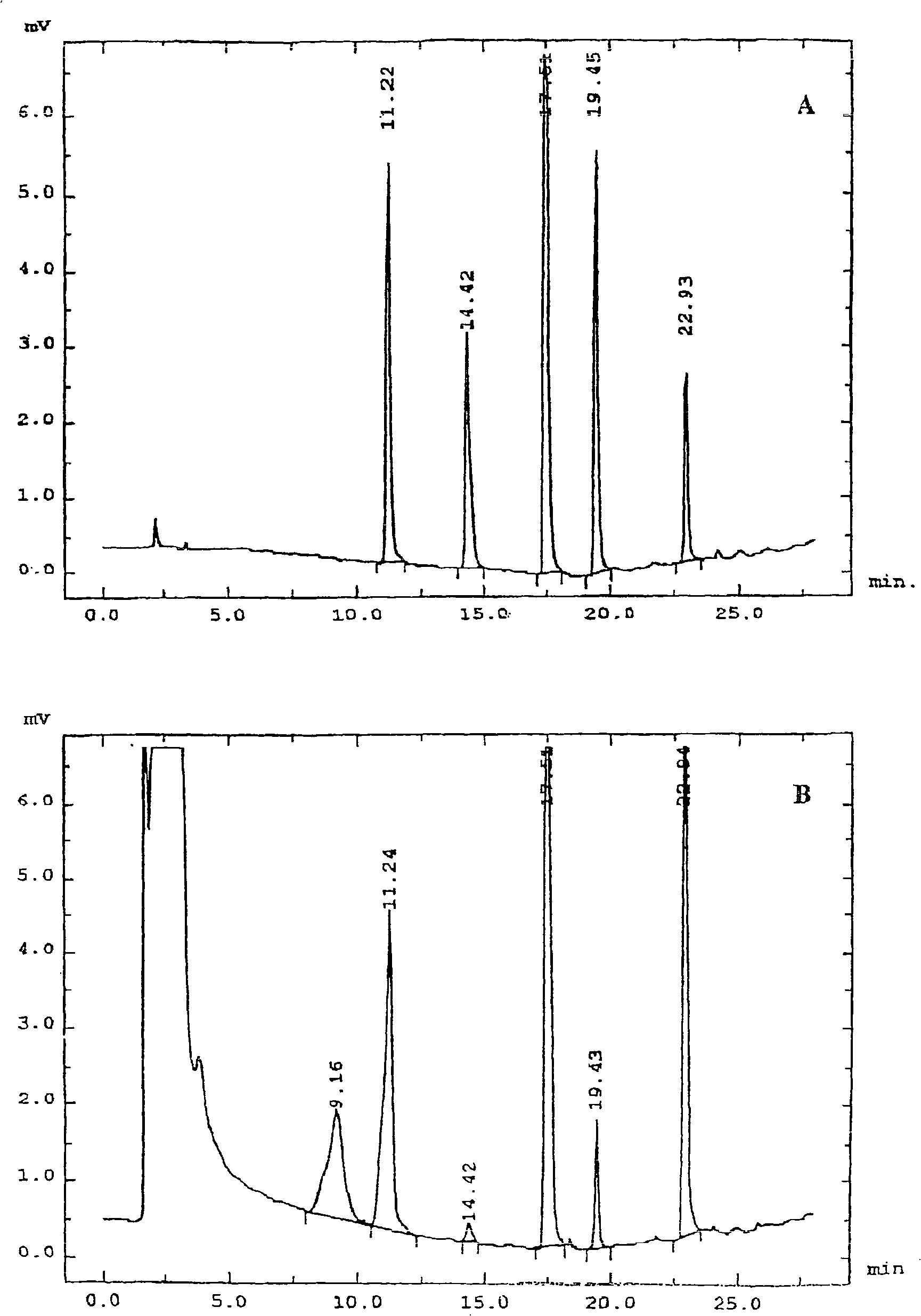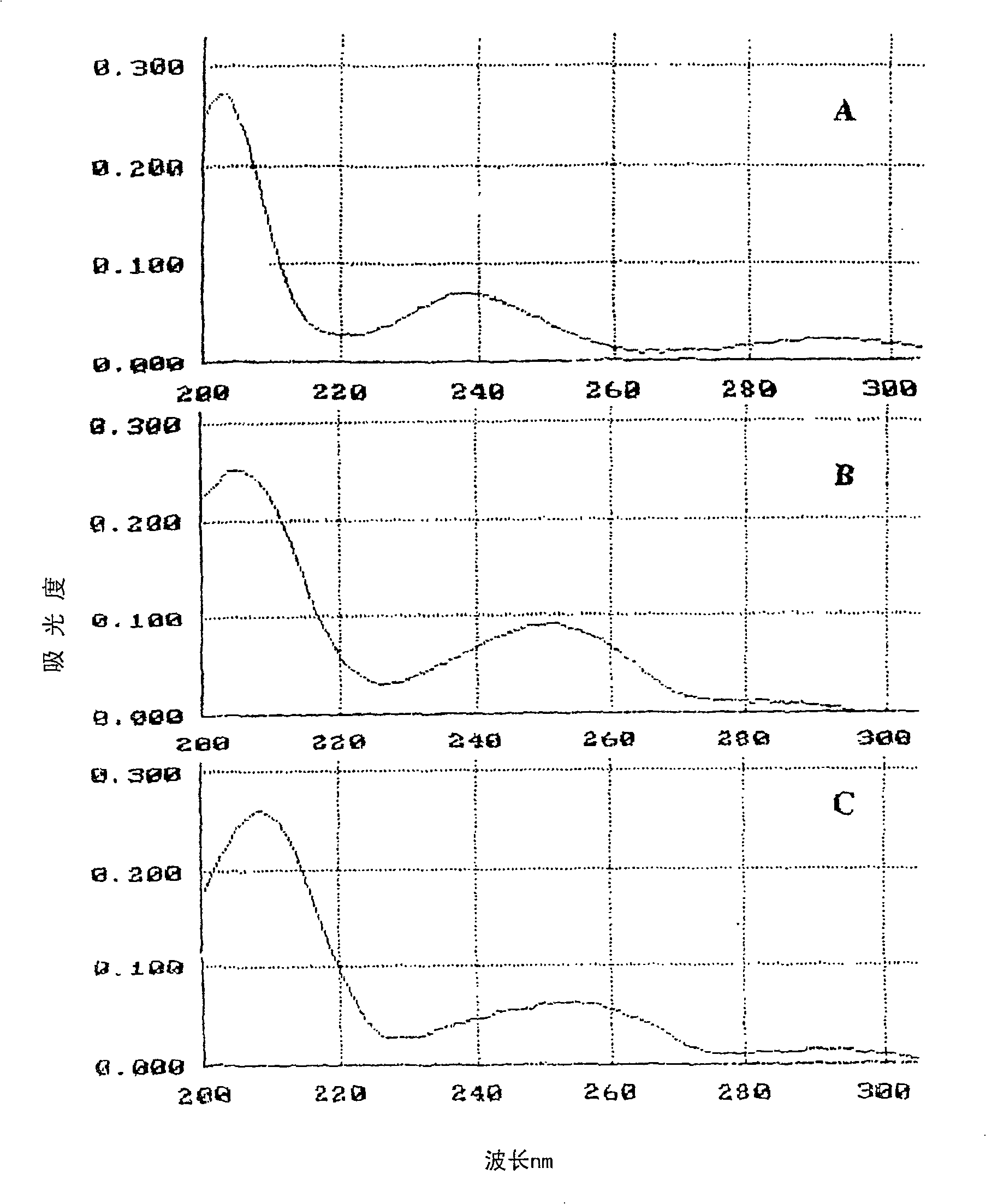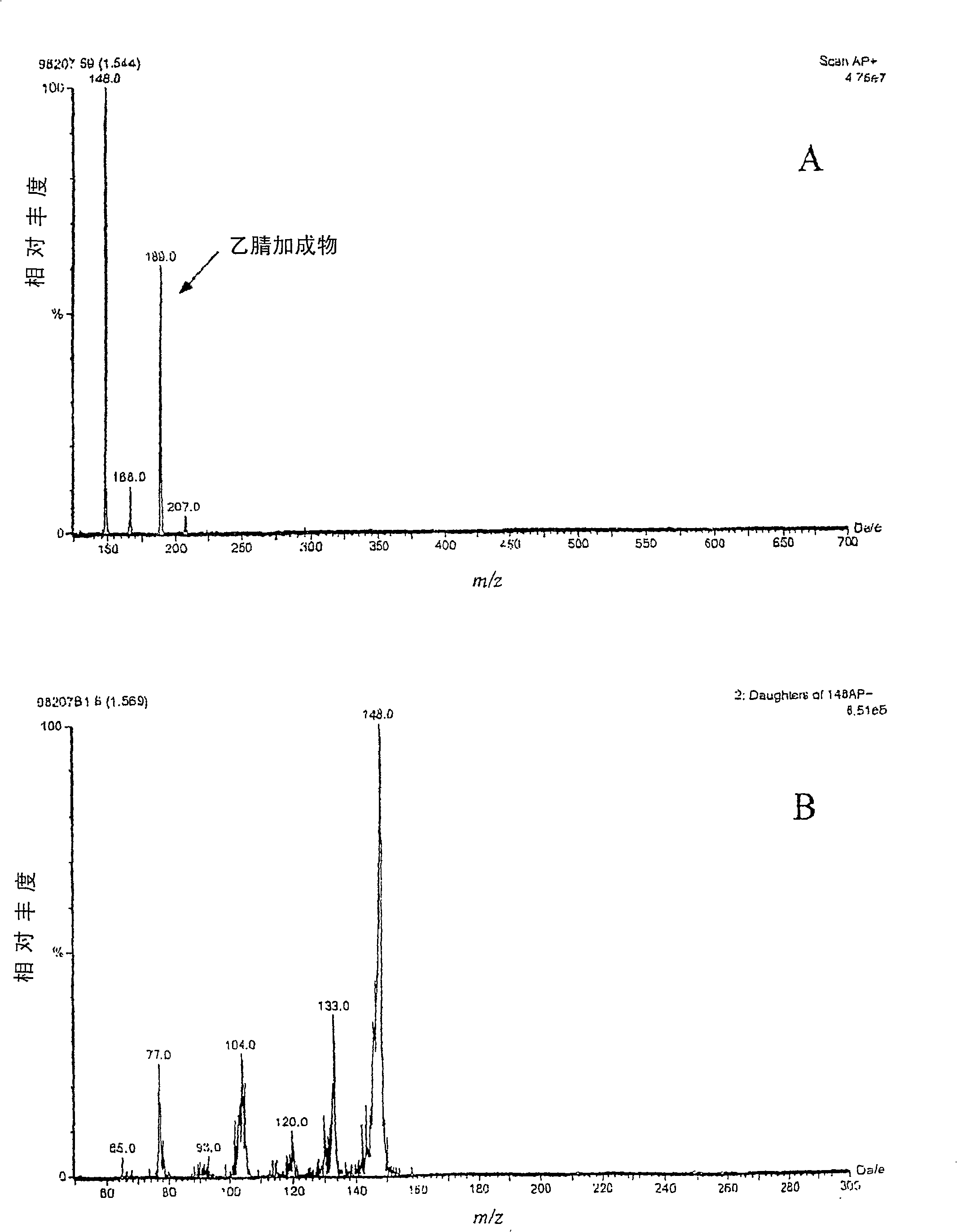Genetic markers for skatole metabolism
A skatole, genetic material technology, applied in the field of identifying new enzymes related to skatole metabolism
- Summary
- Abstract
- Description
- Claims
- Application Information
AI Technical Summary
Problems solved by technology
Method used
Image
Examples
Embodiment 1
[0093] Example 1: Identification of skatole metabolites
[0094] Materials and Methods
[0095] chemical. 3-Methylindole (3MI), indole-3-carbinol (I3C), indole-3-acetaldehyde, indole-3-carboxylic acid, 2-aminoacetophenone, and H-2 from Helix pomatia Type sulfatase was purchased from Sigma-Aldrich Canada Ltd. (Oakville, ON, Canada). Oxindole, 3-methyloxindole (3MOI) and 3-hydroxy-3-methyloxindole (HMOI) were synthesized by the methods of Kende and Hodges (1982) and Skiles et al. (1989), respectively. Authentic 5-hydroxy-3-methylindole and 6-hydroxy-3-methylindole (the form of 6-sulfatoxyskatole) are Jens Hansen-Moller (Danish Meat Research Institute, Roskilde, Denmark). To obtain 6-hydroxy-3-methylindole from 6-hydroxyskatosulfate, the compound was hydrolyzed in a total volume of 0.5 ml acetate buffer, pH 5.0, containing 90 units / ml of H-2 type sulfatase. At 40°C, hydrolyze in a shaker water bath for 4 hours, add 0.5ml of ice-cold acetonitrile to terminate the reaction...
Embodiment 2
[0116] Example 2: Aldehyde Oxidase
[0117] Materials and Methods
[0118] chemical. Menadione, quinacrine and allopurinol were purchased from Sigma-Aldrich Canada (Oakville, ON, Canada). Authenticated HMOI was kindly provided by Dr. G.S. Yost, School of Pharmacology and Toxicology, University of Utah. HMI was produced from porcine liver microsomes, isolated and purified by preparative HPLC as previously described (Diaz et al., 1999). Freeze-dry the isolated HMI and store in a desiccator at -20 °C until use.
[0119] Preparation of porcine liver cytoplasm. Liver samples were obtained from 30 virgin boars obtained by backcrossing European wild boar x Swedish Yorkshire F3 boars with Swedish Yorkshire sows (Squires and Lundstrom, 1997). Liver samples were frozen with liquid nitrogen and stored at -80 °C. For the preparation of cytosolic fractions, partially thawed liver samples were minced and washed with 4 volumes of 0.05M Tris-HCl buffer pH 7.4 (containing 0.15M KCl) ...
Embodiment 3
[0134] Example 3: The role of CYP2A6 in the metabolism of 3-methylindole in porcine liver microsomes
[0135] The effect of different cytochrome P450 enzymes on the metabolism of 3-methylindole (3MI) was studied using selective chemical inhibitors. Screening of 8 chemical inhibitors of P450 enzymes for inhibition specificity of 3MI metabolism in porcine microsomes: α-naphthalenesulfone (CYP1A2), 8-methoxypsoralen (CYP2A6), peppermint Menthofuran (CYP2A6), sulphaphenazole (CYP2C9), quinidine (CYP2D6), 4-methylpyrazole (CYP2E1), diethyldithio Diethyldithiocarbamate (CYP2E1, CYP2A6) and troleandomycin (CYP3A4). In microsomal cultures, the production of different 3MI metabolites was only affected by the presence of CYP2E1 and CYP2A6 inhibitors. In a second experiment, a panel of porcine microsomes (n=30) was screened for CYP2A6 content, as well as 7-hydroxylation activity (CYP2A6 activity) by Western blot analysis. Protein content and enzymatic activity correlated with fat co...
PUM
 Login to View More
Login to View More Abstract
Description
Claims
Application Information
 Login to View More
Login to View More - R&D
- Intellectual Property
- Life Sciences
- Materials
- Tech Scout
- Unparalleled Data Quality
- Higher Quality Content
- 60% Fewer Hallucinations
Browse by: Latest US Patents, China's latest patents, Technical Efficacy Thesaurus, Application Domain, Technology Topic, Popular Technical Reports.
© 2025 PatSnap. All rights reserved.Legal|Privacy policy|Modern Slavery Act Transparency Statement|Sitemap|About US| Contact US: help@patsnap.com



